#catalina de aragón
Text


“I know my love should be celebrated, but you tolerate it…” tolerate it by Taylor Swift///Catherine of Aragon
#catherine of aragon#queen katherine of aragon#katherine of aragon#katharine of aragon#queen catherine of aragon#catalina de aragón#catalina de aragon#henry viii#king henry viii#henry viii of england#henry tudor#taylor swift#tudor history#the tudors#english history#tudor era#art#tudor dynasty#tolerate it#evermore#taylor swift lyrics#lyric edit#renaissance#renaissance history#16th century#sixteenth century#the spanish princess#spanish history#tudor england#tudor period
221 notes
·
View notes
Text
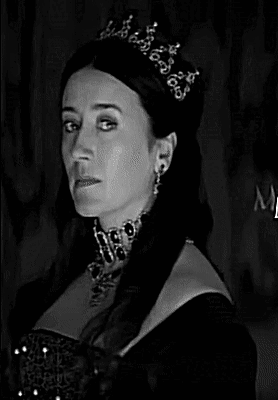


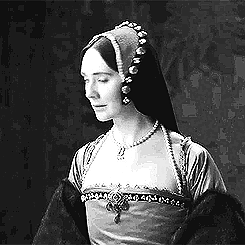
Katherine of Aragon and Anne Boleyn
Part One
Two women destined to be rivals in love, in power and in religion. One is the daughter of royalty, destined to become Queen of England since she was a baby. Her first husband died suddenly, and she married her brother-in-law, the young King Henry VIII. The other woman is the daughter of a family on the rise at court. She has been educated in courts abroad but has returned to her native England to serve the Queen of England.
Katherine of Aragon, a beloved Queen by English people, had "failed" to give Henry VIII a son. The royal couple had a pretty and intelligent daughter named Mary. Knew her duty, Katherine was to keep silent and look the other way when Henry took a mistress, which she did. The young Anne Boleyn was the sister of the King's mistress, and she quickly established herself as one of the most stylish and accomplished women at the court. George Cavendish, Wolsey’s servant and biographer, has argued that Henry VIII was "casting amorous eyes" towards Anne as early as 1523.

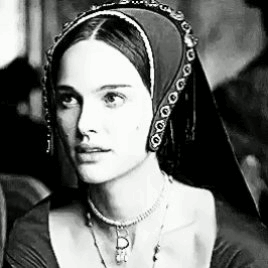
In 1523, Anne Boleyn's life revolved around her duties within the Queen's household. Katherine liked to surround herself with attractive young women, often to her own detriment, and was a benevolent mistress to those who served her, never failing in courtesy towards them, and taking an almost maternal interest in their lives. Young men were made welcome in the Queen's apartments, and there were plenty of opportunities for flirtation. Anne had attracted a number of suitors, and one young man who was smitten with her charms was Henry Percy, the 21-year-old heir to the earldom of Northumberland. Percy was the Cardinal Wolsey's servitor at table; whenever Wolsey went to court, Percy would go with him, but as soon as he had been excused from his duties, he would resort to the Queen's apartments, there to chat and flirt with the maids of honour. Thus he had met Anne Boleyn, and before very long he had eyes for no one else.
According to Cavendish, Anne’s burgeoning romance with Percy was stifled by Wolsey, acting upon Henry’s instructions because the king confessed to his loyal cardinal that he had a “secret affection” for the lady himself. Anne was sent away from court in disgrace to Hever. She spent her time idly waiting for a summons back to court and the signal that she had been forgiven. By late 1525 or early 1526 Anne Boleyn was back in the household of Queen Katherine. Henry VIII’s affair with Anne’s sister, Mary, had ended some time before 1526. He was therefore looking for a new mistress during the early months of that year when he first noticed the object of his friend, Thomas Wyatt’s, affections. Wyatt may not, at first, have realised how serious the king’s feelings were and he attempted to compete with the king for Anne. Wyatt was sent away for a time to ensure that the way was clear for the king to make his advances.


Since Henry could not marry her Anne probably enjoyed a mild flirtation with him but, ultimately, stopped short of agreeing to become his mistress. Henry, who was used to women surrendering the instant he beckoned, was intrigued. It was new for him to be placed in the position of having to beg for sexual favours; far from being angry or irritated, he was captivated, and Anne at once became infinitely more desirable. According to Anne's biographer, George Wyatt, Queen Katherine tried to protect her maid of honour from the monarch’s amorous advances and Anne remained loyal to her queen: "how could I injure a princess of such great virtue?". Anne resisted Henry for over a year, frequently absenting herself from court and his presence. He cajoled and pleaded. He made promises and gave gifts. Above all, he wrote letters. Anne’s feelings were in turmoil following the king’s offer of marriage and she expressed this fact in a gift she sent to Henry along with her acceptance.
In May 1527 Henry initiated annulment proceedings to rid himself of the ageing Queen Katherine. He wanted a declaration that his marriage to Katherine was invalid. This would mean not only that Henry was unmarried in 1527 but that he had never been married in 1509. According to this line of argument, therefore, Katherine’s status was once more that of the widow of his brother Arthur – the Princess Dowager of Wales – and princess Mary a bastard. For Katherine, then, it was as though the Crusades were on her own doorstep. The “secret matter” started of for the queen as a straightforward struggle to make Henry overcome his unfounded scruples of conscience and return to her as her God-given husband, but it escalated over the years into a battle not just for herself and her daughter but for the preservation of nothing less than her “Holy Catholic Faith” itself.
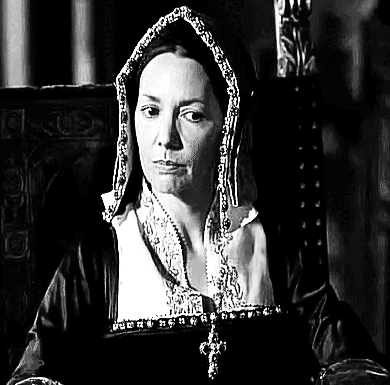
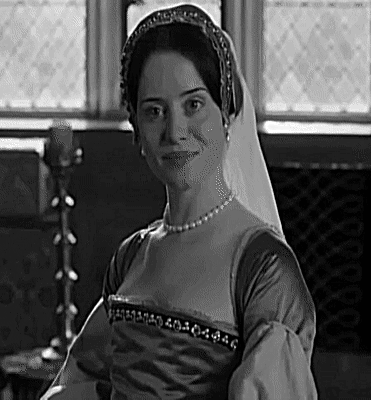
In 1528, Henry housed both women together under the same roof at Greenwich. Henry began showering Anne with fine jewellery and clothes, and saw that she was lodged in splendid apartments close to that of the King. The courtiers made much of her, using her as an intermediary between themselves and the King, and she was soon revelling in her growing influence and power. To confuse things further, both Katherine and Henry still felt obliged to behave in public as if nothing untoward was happening. It seems that the queen went out of her way to meet Anne and Henry, singly and together, using her presence in an attempt to divide, or at least chaperone them. George Wyatt also talks of card games that Katherine instigated with Anne, in an apparent attempt to make Anne show her deformed finger (if you believe she had one!), and Katherine’s famous remark to Anne: "My lady Anne, you have good hap to stop at a king, but you are not like others, you will have all or none”. On the other hand, Katherine behaved impeccably, never showing any spark or kind of grudge or displeasure. According to George Cavendish, Queen Katherine showed Anne special tenderness:
Notwithstanding, she showed neither to Mistress Anne nor unto the king, any spark or kind of grudge or displeasure, but took and accepted all things in good part, and with wisdom and great patience dissimulated the same. She held Mistress Anne in more estimation for the king’s sake than she had before.
Perhaps Katherine decided it was safest to keep her enemy close and that her presence would prove restrictive to the pair, preventing them achieving greater intimacy or plotting her downfall behind her back. Also, she would have maintained that as England’s anointed queen of eighteen years, it was her right and her duty to be visible at court, in the palaces she had been inhabiting for so long, accessible to the people and served at table according to her due. She may have hoped that her presence would be enough to provoke Anne to shame or drive her away. Anne must have found the proximity to her rival oppressive and she often spent time at Hever in the early years of the divorce proceedings.
The Boleyn family received honours from the king. Sir Thomas Boleyn became Earl of Wiltshire and Ormonde; Anne's brother George received the title of Viscount Rochford, while she herself was in future to be known as the Lady Anne Rochford. At a state banquet held to mark the occasion, Anne took precedence over all the ladies present (who did not include Queen Katherine) and was given the place of honour at the King's side. 'The very place allotted to a crowned Queen', wrote the Emperor's ambassador indignantly. Henry was giving Anne every honour he could, every mark of respect – she was being openly treated as if she were already queen. Anne was given her own court, which rivalled the queen’s. Greater court, noted the French ambassador, was being paid to her every day ‘than has been paid to the Queen for a long time’. Henry was determined to show that he was deeply committed to marrying Anne. "kissing her and treating her in public as though she were his wife" according to the papal legate, Cardinal Campeggio.
Sources:
Licence, Amy. Anne Boleyn: Adultery, Heresy , Desire
Weir, Alison. The Six Wives of Henry VIII
Fox, Julia. Sister queens : the noble, tragic lives of Katherine of Aragon and Juana, Queen of Castile
Tremlett, Giles. Catherine of Aragon: Henry’s Spanish Queen
Fraser, Antonia. The Six Wives of Henry VIII
#catherine of aragon#katherine of aragon#catalina de aragon#henry viii#catalina de aragón#anne boleyn
34 notes
·
View notes
Photo


The prayerbook of Catherine of Aragon and Anne Boleyn
Catherine and Anne both owned a copy of the same printed Book of Hours produced in Paris by renowned French printer Germain Hardouyn in about 1527, a year in which Henry VIII had already proposed to Anne and was pushing to annul his marriage to Catherine. Now, for the first time, these valuable items are both on display at Hever Castle, Anne’s former childhood home in southeast England. For centuries Catherine and Anne have been pitted against each other as love rivals with their differences celebrated. The exhibition aims to show the similarities between the two women. Kate McCaffrey, Hever Castle’s assistant curator, says:
“The ownership by both of Henry’s first two wives of a copy of the same edition holds hugely intriguing implications for their relationship with one another and their book ownership. Both Catherine and Anne are well known for being highly educated women who owned and used many books and certainly had access to multiple copies of Books of Hours.Yet their connection to one specific edition is different. It is a connection that comes from a pivotal moment in the English court when Catherine’s star was waning and Anne’s rising. Anne owning a copy of the same edition as Catherine is surely, if nothing else, an emulation of, and aspiration to, the royal status of queen which Anne herself would hold in only seven years’ time”.
Although Anne’s book went missing for many years, in 1910 American tycoon William Waldorf Astor snapped it up after buying Hever Castle. Catherine’s manuscript was acquired at the beginning of the 20th century by another millionaire, John Pierpont Morgan, who kept it in his library in New York. Historians know that Hever’s printed Hours was Anne’s due to the survival of her signed inscription, ‘remember me when you do pray that hope doth led from day to day’. In the Morgan’s printed Hours, Catherine’s ownership is signified by an inscription in a sixteenth-century hand that reads ‘thys boke was good quen Katrin boke’. Thus, it appears as though Catherine herself did not write within her copy of the book, but she certainly owned it.

In the years after the disgrace of both queens, their books were kept safe in the hands of those loyal to them. The Hever’s printed Hours, which Anne may have taken to her execution, was protected by a group of women local to the Boleyns at Hever, whilst the Morgan’s printed Hours was passed to Catherine’s lady-in-waiting, Margaret Coke, and so seems to have been similarly protected by those devoted to her.
A comparative analysis of Hever’s and the Morgan’s Hours showed clear differences in the decoration of the book, signifying a level of customization within the illuminating workshop overseen by Hardouin himself. The Anne’s copy features a greater level of decoration than Catherine’s. Why Catherine and Anne both owning a copy of the same printing? A possibility would be that Henry gifted these books to the two women, the king decided to give his wife the less decorated copy and her lady-in-waiting the better one. Yet it is equally possible that Queen Catherine herself ordered these books for her own use and for the use of members of her household. Group reading, particularly amongst educated women, was a common pastime and it is likely that these books were for the purpose of reading and praying together. Another possibility is that both Catherine and Anne heard of the production of these books, and both requested a copy.
xxxx
28 notes
·
View notes
Text
El Museo Británico acaba de revelar un impresionante colgante y cadena de oro que se cree que está asociado con el rey Enrique VIII y su primera esposa, Catalina de Aragón. Adornado con esmalte rojo y blanco, este artefacto en forma de corazón es una conexión tangible con la Corte Real a principios del siglo XVI.
3 notes
·
View notes
Text
Literally, my happiness is based on these three women: Minerva, Rosamund and Catherine.
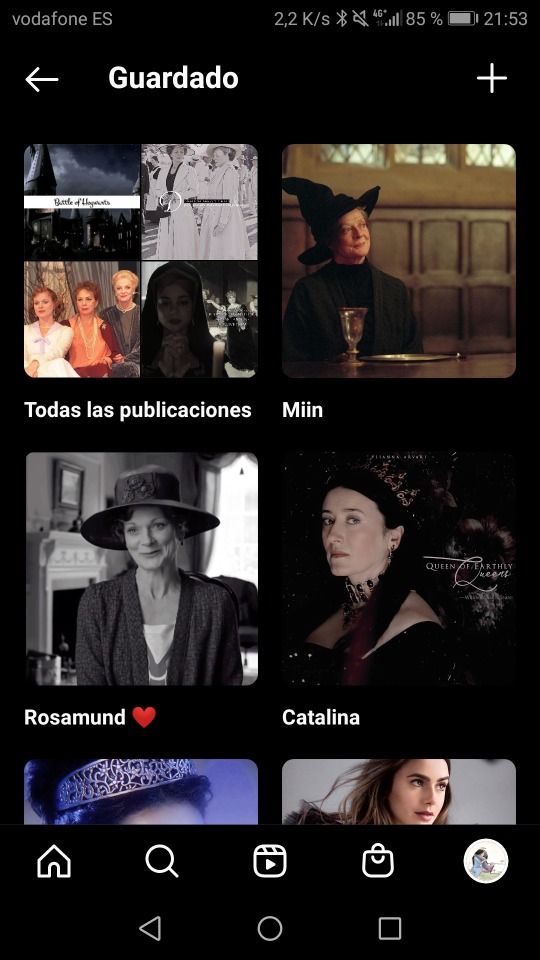
#downton abbey#the tudors#minerva mcgonagall#Rosamund painswick#Downton abbey#Maggie smith#Samantha bond#Catherine of Aragon#Catalina de Aragón#Harry Potter#Professor McGonagall#Violet crawley#Lady grantham#Cora crawley#Edith crawley#Sixwives#Henry VIII#Mary Tudor#Cobert
2 notes
·
View notes
Text
Las esposas de Enrique VIII
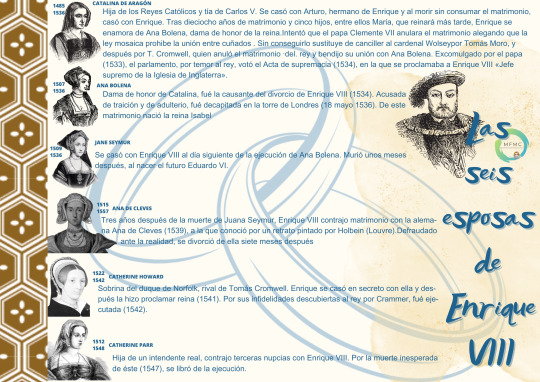
View On WordPress
#Ana Bolena#Ana de Cleves#Catalina de Aragón#Catherine Howard#Catherine Parr#edad moderna#Enrique VIII#Inglaterra#Jane Seymur
0 notes
Text
En la corte del lobo

I.
Hacia el otro lado del estrecho
Putney, 1500
-Vamos, levántate.
-Hilary Mantel
#Novela histórica#rey Enrique VIII#Catalina de Aragón#Ana Bolena#Thomas Cromwell#En la corte del lobo#Hilary Mantel#Trilogía Wolf Hall
0 notes
Text
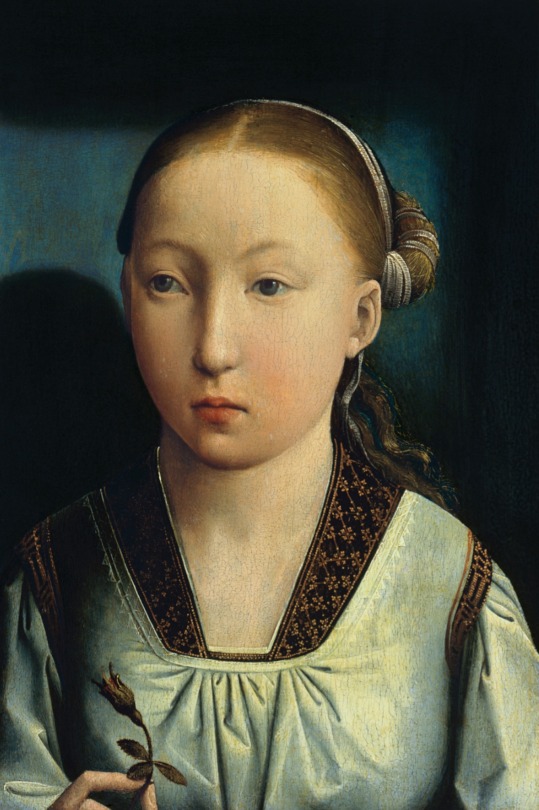
Juan de Flandes, Portait of Catalina de Aragón at age 10
40 notes
·
View notes
Text
LINA

She's silently judging you
#six the musical#six the musical fanart#cathrine of aragon#catalina de aragon#GOD SHE HAS SO MANY NAME#Infanta Catalina de Aragón y Castilla#is HER REAL NAME#UGH
6 notes
·
View notes
Photo

(Photo: Carmen Escobar Carrio)
Juana Galán - Heroic guerrillera
When the French invaded Spain during the Peninsular War, some women were determined to resist. Among them was Juana Galán (1787-1812), the daughter of a prosperous tavern keeper.
On June 6, 1808, a column of 1,000 enemy troops attacked the town of Valdepeñas. Juana rallied the townswomen under her command. They manned the windows and threw boiling water and oil at the enemy.
Juana went to the street armed with a club. She reportedly pulled several French soldiers from their horses and dispatched them with a blow to the head. The townspeople’s fierce resistance forced the French to retreat and never return.
Juana didn’t live to see the end of the war. She died in 1812 while giving birth to her daughter. Her legacy lives on and she was made a local heroine and a symbol of resistance. She now has her own monument in Valdepeñas.
Like Juana, other women fought in desperate situations or during riots, sometimes with improvised weapons. In 1809, an unnamed woman armed with a sword rallied the inhabitants of Penafiel (northern Portugal) and led them in battle against the raiders. In 1811, María Marcos, a tavern keeper from La Palma del Condado, played a key role in repelling a small group of French soldiers.
There were also cases of women involved in guerrilla warfare. The Catalan Somatén, a paramilitary defense organization, had female members such as María Escoplé, Magdalena Bofill, Margarita Tona, María Catalina and Catalina Martín. Francisca de la Puerta reportedly fought in Extremadura and commissioned the Junta of her province for permission to form her own guerrilla band.
Wanting to avenge her father and brother, Martina de Ibaibarriaga Elorriagafora disguised herself as a man and led a guerrilla band until she gained a commission in the Spanish army. An unnamed woman was given the command of a troop by the Junta of Molina de Aragón in 1809. A British officer also mentioned women serving with bands of irregulars as active combatants.
For more heroines of the Peninsular War, see Agustina de Aragón.
Feel free to check out my Ko-Fi if you want to support me!
Further reading
Esdaile Charles J., Women in the Peninsular War
Sheldon Natasha, “Juana Galan: A Spanish Heroine of the Peninsula War”
#Juana Galán#history#women in history#spain#spanish history#peninsular war#napoleonic wars#19th century#women's history#warrior women#war#women warriors#historyblr#badass women#historicwomendaily#historical ladies#warriors
68 notes
·
View notes
Text






Tudor Week Day 2: Fave Female Tudor Family Member: Catherine of Aragon
#catherine of aragon#katherine of aragon#queen katherine of aragon#queen catherine of aragon#catalina de aragón#catalina de aragon#henry viii#tudor history#the tudors#english history#tudor era#dailytudors#tudorweek2023#Tudor week 2023#daily Tudors#mean girls#regina george#tudor england#tudor dynasty#tudor period#tudor#tudors#house of tudor
116 notes
·
View notes
Text

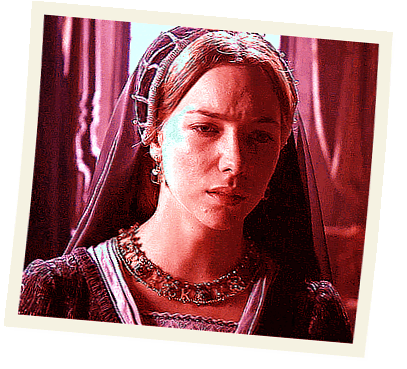



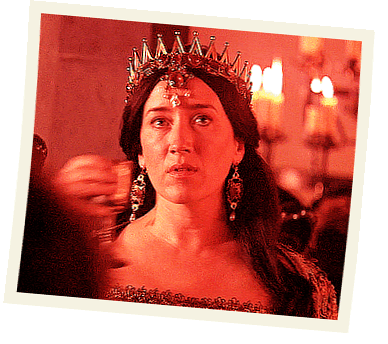




Nerea García
Natalia Rodriguez
Charlotte Hope
Annette Crosbie
Paola Bontempi
María Doyle Kennedy
Frances Cuka
Irene Papas
Melida Molina
Joanne Whalley
as Katherine of Aragon
#catherine of aragon#katherine of aragon#catalina de aragon#catalina de aragón#maria doyle kennedy#charlotte hope
24 notes
·
View notes
Text
85 notes
·
View notes
Text

Tras el éxito de Reinas malditas, regresa Cristina Morató con las fascinantes vidas de cinco reinas que dejaron su huella en la Historia.
Los retratos oficiales que muestran a las reinas ataviadas con suntuosos vestidos y cubiertas de joyas ocultan unas vidas marcadas por las desdichas y las tragedias personales.
Algunas de ellas se encontraban lejos del trono al nacer, pero consiguieron ceñir la corona por derecho propio y no por matrimonio. Isabel I de Inglaterra, hija de Ana Bolena, pasó de ser una princesa bastarda a dar nombre al glorioso siglo en que reinó; Catalina la Grande no dudó en ponerse al frente de un ejército para derrocar a su esposo y dirigir con mano firme el imperio ruso, mientras que la emperatriz Cixí entró en la Ciudad Prohibida como concubina y gobernó China oculta tras una cortina de seda. Hubo también reinas marcadas por la fatalidad que sobrevivieron en un mundo de intrigas: Catalina de Aragón, hija de los Reyes Católicos y primera esposa de Enrique VIII, fue una de las soberanas más amadas de Inglaterra. O la infeliz Carlota de México, una joven y culta princesa belga que se convirtió en emperatriz de México y perdió la razón tras el asesinato de su esposo, Maximiliano de Habsburgo.
Déspotas, libertinas, desalmadas, arpías, locas... son solo algunos de los adjetivos que engrosaron la leyenda negra de estas cinco soberanas. Cristina Morató da voz en este libro a las mujeres de carne y hueso que alcanzaron el poder en un mundo de hombres gracias a su inteligencia, valor y fortaleza y nos descubre que los mejores reyes fueron reinas.
6 notes
·
View notes
Note
I find so funny the idea of Catherine of Aragon (Catalina de Aragón en mis tierras), daughter of the fucking Catholic Monarchs, being a witch. Like. So funny. It really suits her
right? that would be so fucking funny. she doesn't tell anyone because she does have a pretty good brain in her head, but privately she's just like, "well obviously this is a gift from god, so I'm going to use it."
9 notes
·
View notes
Text
Tal día como hoy 11 de febrero ...
2016: Se comunica de manera oficial la detección de las ondas gravitacionales en el experimento LIGO. La primera observación directa se logró el 14 de septiembre de 2015.
2013: El papa Benedicto XVI anuncia que renunciará a sus funciones el día 28 de febrero por razones de salud.

2005: En España se inaugura el Año Internacional de la Física, declarado por la UNESCO con un acto en el Congreso de los Diputados.
2005: Investigadores argentinos encuentran en la Patagonia el único yacimiento, hasta la fecha, de huevos de dinosaurio con embriones en su interior.

1999: En San Francisco (Estados Unidos), un jurado condena a Philip Morris (empresa fabricante de los cigarrillos Marlboro) a pagar 50 millones de dólares a una fumadora con cáncer de pulmón irreversible.

1984: Aterriza en Cabo Cañaveral el transbordador espacial Challenger, tras una misión donde dos astronautas realizaron por primera vez un paseo espacial autopropulsado.

1958: Se produce la tormenta solar más fuerte de la historia, hasta ahora registrada, conocida también como evento Carrington.

1958: En Estados Unidos por primera vez una mujer afroamericana (Ruth Carol Taylor) accede a un puesto de azafata, en la aerolínea Mohawk Airlines. Aunque el puesto sólo le duró seis meses porque la empresa prohibía que las azafatas se casaran.

1945: La ciudad de Budapest es ocupada por el ejército de la Unión Soviética.

1531: Enrique VIII se autoproclama jefe supremo de la iglesia de Inglaterra, tras romper relaciones con el papa romano al no haber anulado su matrimonio con Catalina de Aragón.
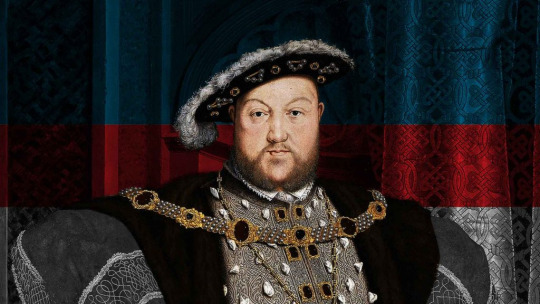
3 notes
·
View notes